
Boraginaceae: the Borage Family
Just as our Forget-Me-Nots fade, Vipers Bugloss appears to keep up the bright flashes of blue. As a rule, these plants are hairy and some of them can irritate the skin. Itchy arms are a small price to pay for the life that insects bring to my garden. Forget-Me-Not flowers make lovely cake decorations - PLEASE MAKE SURE YOU KNOW WHAT YOU ARE PICKING.
Epsom & Ewell Flower Finder
Boraginaceae: the Borage Family
Included in this family are the three kinds of Forget-Me-Nots at large in our borough. The shade loving woodland version is a garden escape and valuable for early bees. A smaller version grows in our fields and a wetland species in our ponds. Moth caterpillars will munch into your Boraginaceae - this is a good thing - they are beautiful!
HOME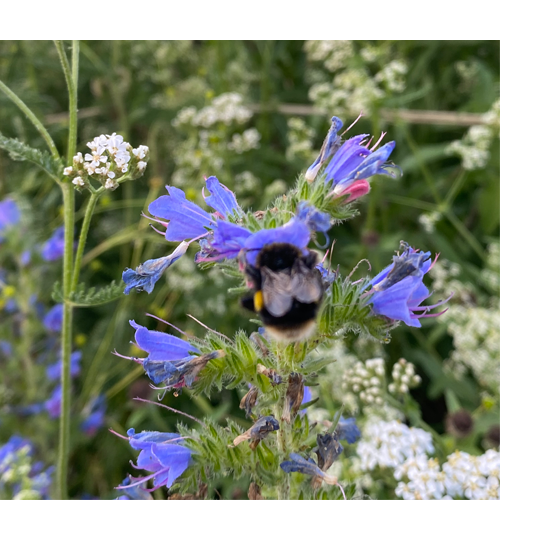
Echium Vulgare
Vipers Bugloss.
Tall spikes of flowers. Develops a seed case said to resemble a viper's head. Plant up to 1 metre high.
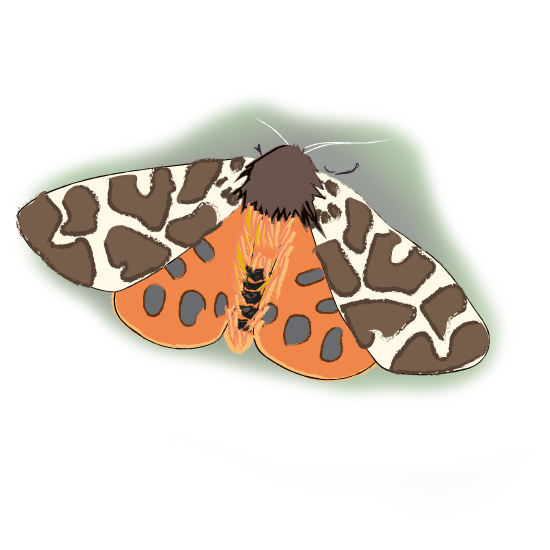
About
Attractive to insects. Moths like the Garden Tiger (flying by day as well as night) rely on the plant as food for their caterpillars.
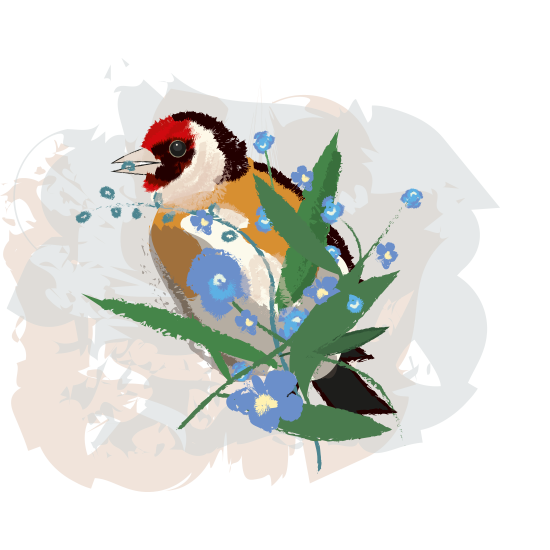
I grow this plant with ornamental grasses and purple sage. They are also appearing in Cuddington, Surrey, along the hedgerows, thanks to our local Goldfinches who seem to swallow the seeds whole then pass them undigested.
RETURN TO LIST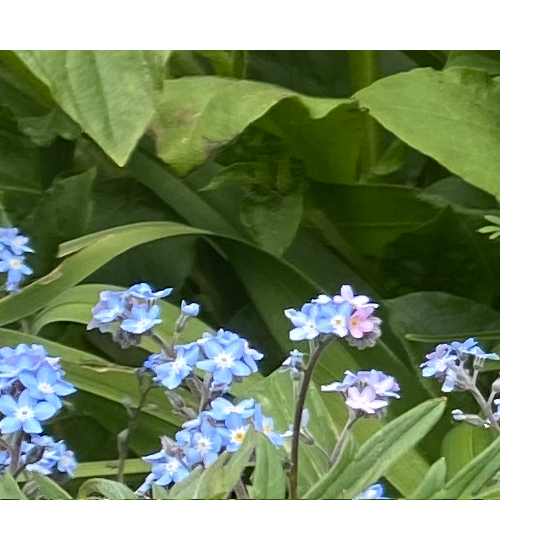
Myosotis sylvatica
Wood Forget-Me-Not.
Grows to 30cm. Hairy stems and leaves.

About
The Jersey Tiger Moth makes herself at home in Cuddington; we are lucky to see this day-flying moth in our gardens. Borage species are a larval food.

The seeds of the Borage Family are energy-packed - irresistible to birds and small mammals. Once in your garden, these plants reseed year on year. Happy in shady places and sows itself everywhere - but you can always give away what you don't need.
RETURN TO LIST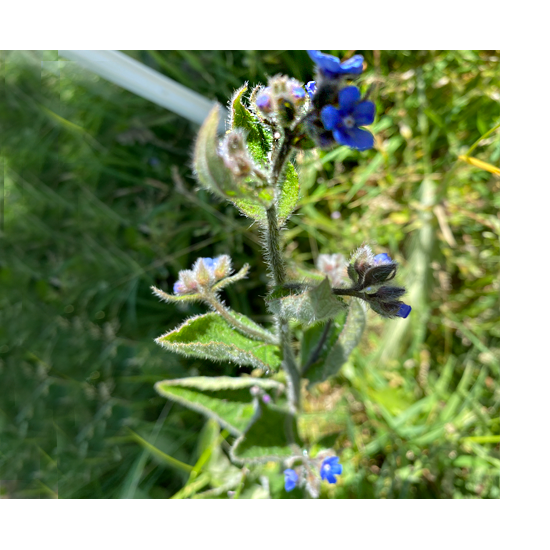
Pentaglottis sempervirens
Green Alkanet.
Hairy and can be an irritant. Back of leaf paler than front. 1 metre high.
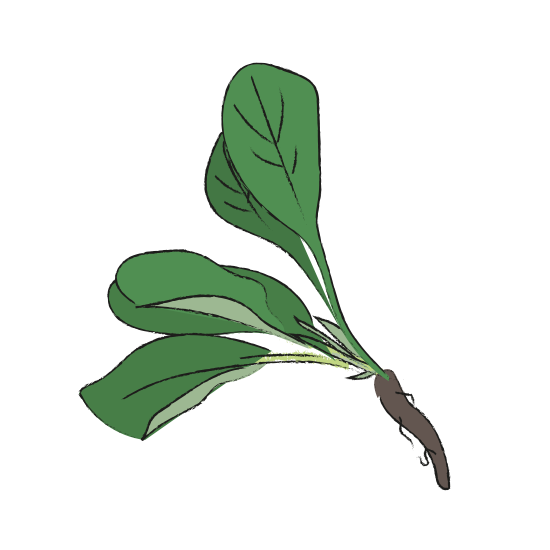
About
The huge root makes this a difficut plant to eradicate from your garden. In the wild, a valuable bee plant. The leaves (and sometimes the flowers) carry on during mild winters, hence the "green" in the name. In spring, the Hogsmill River Valley is alive with insects dining on the nectar.
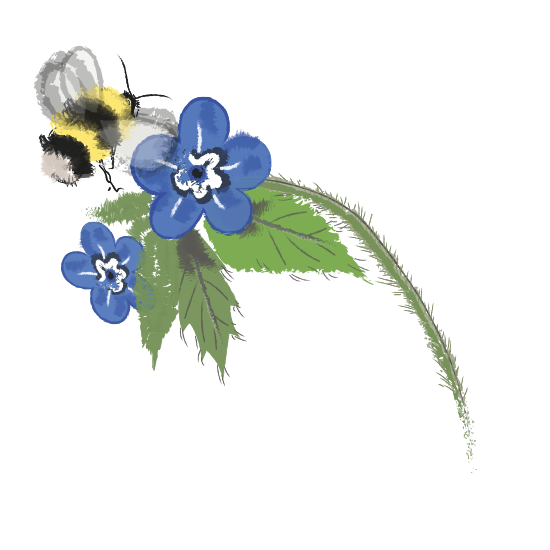
Introduced in the 1700s from Southern Europe and in the past, the root was used by dyers. The plant is very hairy and can cause intense itching. That said, I allow it in my wild area of the front garden and leave it well alone. From dawn until dusk it is a magnet for bees.
RETURN TO LIST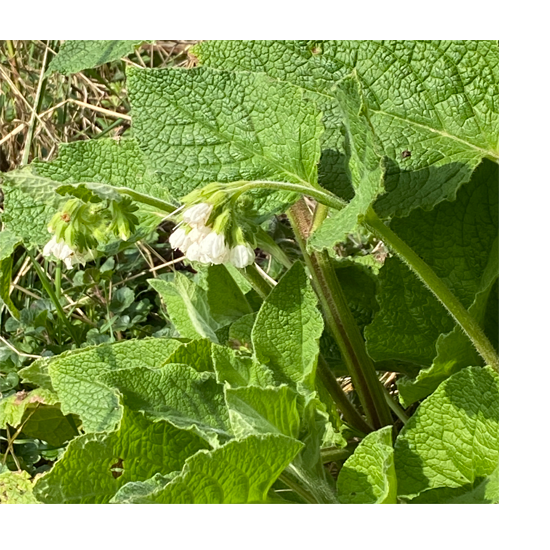
Symphytum orientale
White Comfrey.
Hairy, but not too rough to touch.
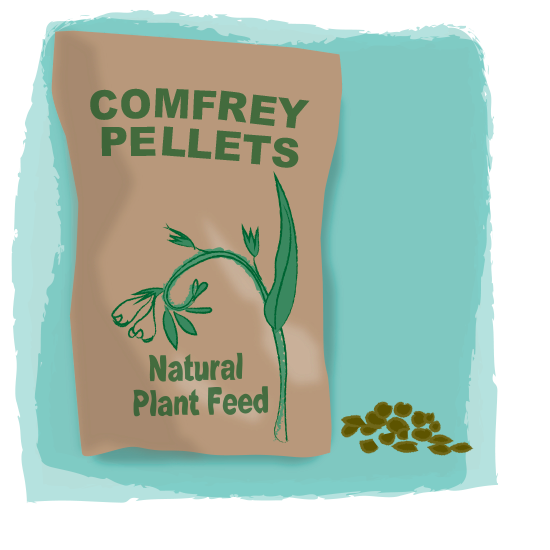
About
Central tap root. Comfreys reach nutrients deep in the soil unaccessible to other plants. The green parts are nutrient rich and exploited by gardeners.
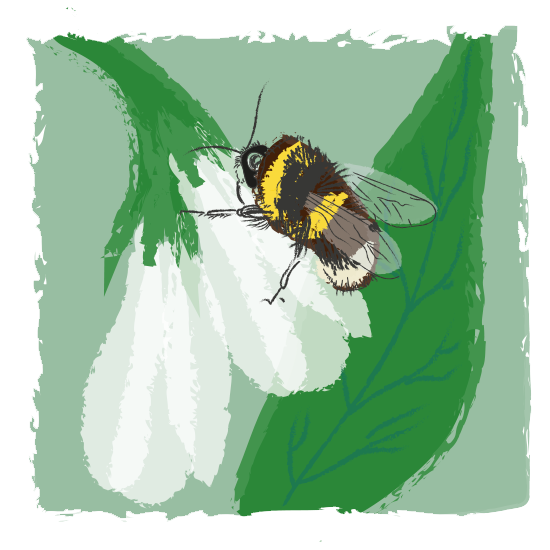
Good nectar stores, flowering early in the year. Bumble Bees love comfreys - shorter tongued species bite through the tubular flowers to reach the prize!
RETURN TO LISTMore information
SURREY'S WILDFLOWERING PROJECT is a community-led initiative, aiming to build a partnership that enables wildflowering in the county as well as promoting and celebrating the boroughs/districts diverse environments. Do take the time to find out more about the project and if you can get involved, even in a small way, you will make a difference.
 SURREY WILDFLOWERING
SURREY WILDFLOWERING